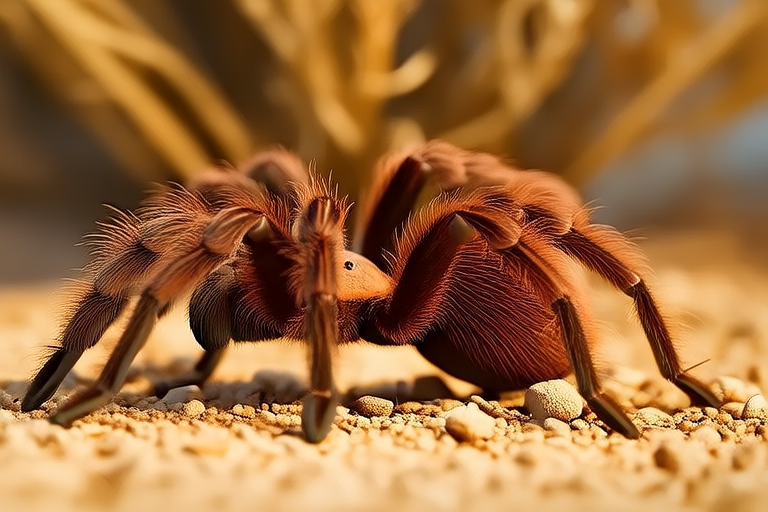Chilean Rose Tarantulas: What You Need to Know Before Adoption
Welcome to the fascinating world of Chilean rose tarantulas! These spiders are among the most popular pets for arachnid enthusiasts. Before you decide to adopt one, it’s crucial to understand their unique characteristics, care requirements, and the responsibilities that come with owning them. This guide will walk you through everything you need to know about Chilean rose tarantulas, ensuring you’re well-prepared for the rewarding experience of keeping these captivating creatures.
Appearance
The Chilean rose tarantula (Grammostola rosea) is a medium-sized spider native to South America. They typically grow to a leg span of around 4 to 6 inches. Their body coloration ranges from a pale brown to a deep reddish-brown, often with subtle pink or rose hues, which gives them their common name. These spiders have eight eyes arranged in two rows and eight legs, each ending in tiny claws. The hairs on their abdomen can be used as a defense mechanism, which they may release if they feel threatened.
Temperament
One of the reasons why Chilean rose tarantulas are so popular is their relatively docile nature. They are generally calm and slow-moving, making them ideal for handling by experienced keepers. However, it’s important to handle them with care and respect. While they are not aggressive, they can bite if provoked, though their venom is considered mild and not dangerous to humans. Their primary defense mechanism is their ability to release urticating hairs, which can cause irritation to the skin and eyes.
Care Requirements
Owning a Chilean rose tarantula requires commitment and attention to detail. Proper care ensures your pet remains healthy and happy. Below are some essential care tips:
- Humidity: Maintain a humidity level of 50-70%. Use a hygrometer to monitor this.
- Temperature: Keep the enclosure between 75-85°F (24-29°C).
- Substrate: Use a substrate like coconut fiber, peat moss, or vermiculite to allow burrowing and maintain moisture.
- Hiding spots: Provide ample hiding places made from cork bark, logs, or plastic plants.
Habitat Setup
Creating the right habitat is crucial for the well-being of your Chilean rose tarantula. Start with an appropriately sized tank, ideally 10 gallons or larger for an adult. Ensure good ventilation but avoid drafts. The substrate should be at least 3-4 inches deep to allow burrowing. Add water dishes and hiding spots, ensuring there are no sharp edges or small spaces where the tarantula could get stuck.
Diet
Feeding your Chilean rose tarantula is straightforward. Feed them live insects such as crickets, mealworms, and dubia roaches. Feed juveniles every 3-4 days and adults once a week. Dust the food with calcium powder to ensure proper nutrition. Remove any uneaten prey after a few hours to prevent contamination. Always provide fresh water in a shallow dish.
Health Concerns
Like all animals, Chilean rose tarantulas can face health issues. Regular monitoring can help catch problems early. Common issues include dehydration, mites, and poor shedding. Signs of illness include lethargy, refusal to eat, or unusual behavior. If you notice any concerning symptoms, consult a veterinarian who specializes in exotic animals.
Legal Considerations
Before adopting a Chilean rose tarantula, check local laws regarding exotic pet ownership. Some areas may restrict or prohibit certain species. Ensure you comply with all regulations to avoid legal troubles. Additionally, consider ethical sourcing when acquiring your tarantula to support sustainable practices.
Adoption and Responsibility
Adopting a Chilean rose tarantula is a significant decision that comes with substantial responsibility. It’s essential to research thoroughly and prepare adequately before bringing one home. Potential owners must commit to providing the necessary care and environment. Remember, these spiders can live up to 20 years, so think long-term.
Conclusion
Chilean rose tarantulas are fascinating creatures that offer unique companionship and educational opportunities. By understanding their needs and providing proper care, you can enjoy a rewarding relationship with these beautiful arachnids. With patience, dedication, and love, you’ll find that owning a Chilean rose tarantula is an enriching experience.
